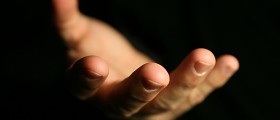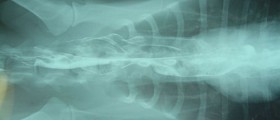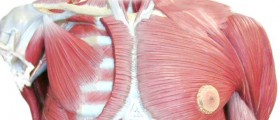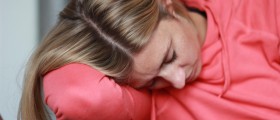
Duchenne muscular dystrophy or DMD is genetic disease which may affect various muscles in human body. This condition is something people are born with and it could be inherited from the parents.
Symptoms and Diagnosis of DMD
People suffering from Duchenne muscular dystrophy suffer from muscular weakness. The disease starts very early in life and first signs are weakness of the muscles in the limbs, especially weakness of thigh muscles. Because of that, patients could experience frequent falls, waddling walk, appear to be clumsy and have difficulties to climb the stairs. They could experience troubles when trying to get up after sitting or lying down, also. Some of the DMD patients may have large calf muscles in early stages of the disease. Besides problems with legs, walking and climbing the stairs, DMD can also affect facial muscles, leading to eye and lip problems, like closing eyes or wrinkling the lips.
Later phases of Duchenne muscular dystrophy may provoke inability to stand or walk, muscle contractures or muscle wasting, as well as lordosis or scoliosis of the spine (bending of the spine forwards or sideways). Patients can experience breathing difficulties, frequent lung infections, swallowing issues as well as some heart related problems.
Proper diagnosis of DMD requires several tests. The most commonly used are biopsy of the muscles, 120led ECG (or EKG, electrocardiogram), EMG (electromyography), MRI (magnetic resonance imaging) and some genetic tests.
What Causes Duchenne Muscular Dystrophy?
Being genetic disease, DMD is caused by certain problems related to genes and chromosomes. In fact, this disease is caused by mutation of the gene called dystrophin gene. This causes some cellular (mitochondrial) dysfunction and causes increased production of free oxygen radicals. Too many free radicals damage the muscles and lead to cell death. Death of muscle cells leads to weak, small and deformed muscles. Death of muscle cells is followed with replacement of muscles with some adipose and connective tissue.
The disease affects mostly boys, so girls are very rarely seen as DMD patients. It usually starts in the legs and pelvis and moves and affects other muscles in the body.
How to Treat DMD?
Muscle weakness and muscle wasting caused by DMD can’t be treated. Pain and stiffness are symptoms doctors can do something about it and most of them recommend medications to DMD patients.
Genetic counseling, assistive devices and some rehabilitation therapies are common treatment options for most of these patients. Medications like pain killers or some steroids may lower the pain, redness and the swelling, or be used to treat other condition in each specific patient. Muscle contractures might need to be surgically treated.
















Your thoughts on this
Loading...